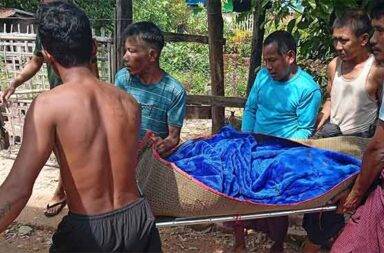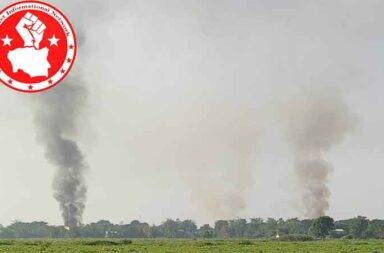Cyclone Mocha Renders Over 100,000 Acres of Paddy Fields Unusable in Arakan State
By Network Media Group
Friday, January 12, 2024
Paddy farmers in Arakan State are experiencing an 80 percent decline in production compared to previous years due to their fields being contaminated with saltwater caused by Cyclone Mocha in 2023.
“Saltwater flooded our paddy field. The plants are fine, but there are fewer paddy seeds because it affected our soil,” a farmer from Ale Chaung village in Rathedaung Township told NMG.
Farmers in the township said that they used to get 50 bags of paddy seeds per acre in the past, but from October to November, they received less than 10 bags.
“This is the negative impact of Cyclone Mocha,” said the deputy chairperson of the Farmers Association for Rathedaung Township. “In some places, farmers do not need to harvest their paddy plants because there are no paddy seeds on their plants.”
All of the land destroyed by the cyclone is situated along the western and eastern banks of the Mayu River.
Some farms in Rathedaung Township were unaffected, but he could not say how many were due to the recent armed conflict that began between the Arakan Army and the State Administration Council in Arakan State.
When the cyclone struck on May 14, over 70,000 bags of paddy seeds were destroyed in Sittwe, Rathedaung, Maungdaw, Ponnagyun, Kyauktaw, Mrauk-U, Minbya, and Pauktaw townships, according to data compiled by the military regime.
“After Cyclone Mocha, the government provided some money to farmers to buy paddy seeds so we could keep going. We fertilized our rice farms. And even though the plants were growing fine, there were no seeds on them,” a farmer from Tein Nyo in Mrauk-U Township told NMG.
Under the military regime and in the middle of armed conflict, farmers lack the financial and technical support to address this problem that has decimated their livelihoods.
According to the Arakan State Farmers Union, there were nearly 850,000 acres of paddy farmland in the state between 2019-2020. However, after the cyclone, over 100,000 acres remain unusable.


